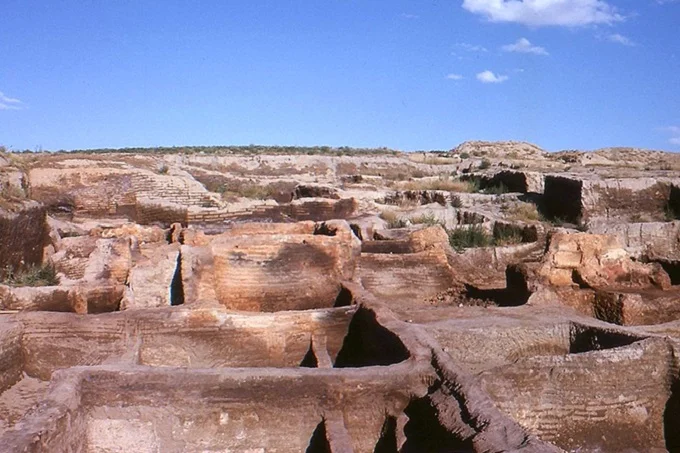The fundamental issue with contemporary cities is their overcrowding. The population of megacities grows at an almost exponential rate every year. New communities and residential complexes are actually “stamped” by developers. The problem of maintaining social and transportation facilities, as well as the subject of environmental preservation, fade into the background. Some cities are actually drowning in sewage and trash, with criminals and illnesses wreaking havoc on their residents.
Some may find it difficult to believe, yet the issue of urban congestion is far from new. It is thought to be at least 9,000 years old, according to scientists. They back up their statements with solid scientific facts.
Catal Huyuk, one of the earliest big human settlements in history, was found by scientists more than a quarter-century ago. It was called after the “name” of a hill in Anatolia, modern-day Turkey’s southern area, where the most ancient city was unearthed. Scientists may clearly state that between 3 and 8 thousand people resided in the Catal Huyuk hamlet at various periods after more than 25 years of excavations.
The study group’s findings, which included archaeologists and anthropologists, were published in one of the issues of the prominent scientific journal Proceedings of the National Academy of Sciences in the summer of 2019. According to scientists, the Chatal Huyuk urban-type hamlet exemplifies what close proximity of a large number of individuals might lead to over time.
Unsanitary and claustrophobic circumstances
Archaeologists discovered some of the oldest cultural strata at the Catal Huyuk site, which date back to roughly 7400 BC. This village was inhabited until 5600 BC. The historic city has been being built up for about two thousand years. The majority of the structures were set almost end-to-end.
Because of this “compactness,” some buildings’ entry portals were built into their roofs. It turned out that the only way to get inside the home was to climb up the stairs. With the streets so congested, it’s easy to assume that the houses themselves had a very small “square.”
Scientists discovered all the “delights” of people’s lives in this constrained position after a more comprehensive examination of the premises. Scientists discovered residues of rotting food, as well as animal and human excreta, on the floors and even the walls of some rooms, indicating that the residences were in very unhygienic circumstances.
Diseases in a bouquet
Mountains of filth, grime, and crowdedness – all of these conditions were ideal for the growth of harmful bacteria of all types. Scientists think that epidemics of numerous illnesses were virtually regular in Catal Huyuk. According to studies of human remains discovered in the settlement, nearly a third of the residents died from bacterial infections or diseases.
The carbohydrate diet, which almost the whole population of Catal Huyuk “sat” on, had a severe impact on their dental health. Tooth decay was seen in 13 percent of women and 11 percent of men who ate mostly grains and legumes.
Violent outbursts
The proto-tightness settlements and congestion had to have an impact on the number of criminal crimes. Researchers discovered one trend after studying almost a hundred human skeletons: when Catal Huyuk was overpopulated, the percentage of people who died violent deaths climbed considerably.
A quarter of the skulls in the 93 bones studied (13 females and 10 males) suffered significant injuries from tiny round objects. The victims died as a result of their injuries. Scientists think that stone “shells” launched from the sling may have caused harm. Another 12 turtles were discovered to have had the same injury throughout their lives.
According to the study’s authors, the criminal situation in Catal Huyuk, like that of current congested cities, was very stressful. The assaults were most likely motivated by the same factors that drive current “ghettos”: a lack of food, territorial conflicts, or the shifting of “spheres of influence” amongst criminal organizations.
I was able to get away from the issue
Archaeologists and anthropologists were able to deduce why the ancient human village Catal Huyuk was abandoned over two thousand years after it was founded by studying the bones and artifacts discovered during the excavations. The downfall of the ancient “metropolis” was mostly due to a slew of environmental issues.
The critical resources in the settlement’s immediate area dwindled over time. The residents of Catal Huyuk started to go on foot more and more, according to anthropological investigations of human remains. After examining the leg bones of the ancient “Catal Huyuks,” scientists arrived at this conclusion. People who resided in this village eventually abandoned it for good. They most likely migrated to surrounding areas, where they established new “cities.” Catal Huyuk was abandoned for millennia about the middle of the VI century BC.
Why didn’t the ancient townspeople solve the problem of overpopulation by expanding the features of their “metropolis”? Indeed, as evidenced by the data, the resources for the construction of buildings at some distance from the “center” of Chatal-Huyuk were quite enough. Researchers have yet to provide a clear solution to this topic.
